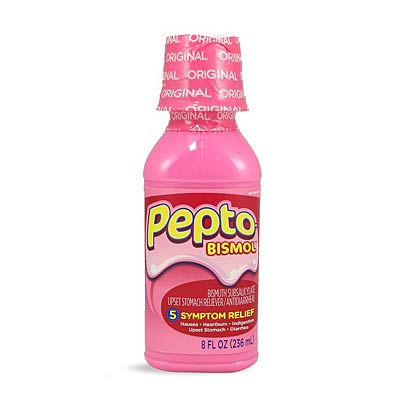 Medical offices might have gone high-tech, but some of the advice
you'll hear there these days rings more nostalgic: Complain of
constipation or congestion and you may get an Rx for dried plums (née
prunes) or a saltwater gargle.
Medical offices might have gone high-tech, but some of the advice
you'll hear there these days rings more nostalgic: Complain of
constipation or congestion and you may get an Rx for dried plums (née
prunes) or a saltwater gargle."The more that old remedies pan out in studies, the more likely physicians are to suggest them," said Dr. Philip Hagen, vice chair of the division of preventive medicine at Mayo Clinic. "Part of the drive is the cost of health care—trying these at home could save you a trip to the doctor." Consider these golden oldies the next time you're feeling under the weather.
Ginger
For thousands of years, this spice was used to knock out nausea. But unless you went to an Eastern medicine doctor, you weren't going to hear about it from your MD. Then, along with the 21st century came a string of studies pointing to ginger's potential to combat nausea related to motion sickness, chemotherapy and pregnancy. "Once the science was there, more doctors were willing to 'prescribe' it," said Dr. Patricia Raymond, assistant professor of clinical internal medicine at Eastern Virginia Medical School in Norfolk, Va. Try candied ginger, ginger tea or even ginger cookies the next time that you're feeling queasy.
Health.com: Scary Symptoms You Can Relax About

 BenGay
BenGayThis pain-easing ointment was always a favorite with athletes but not so much with the average exerciser, mostly because of the medicinal scent. "When I smell menthol, I'm like, 'Ugh,'" said Renee Acosta, clinical associate professor of health outcomes and pharmacy practice at the University of Texas, Austin. "You don't want to smell like that at work." Today, though, medical pros are touting BenGay even to weekend warriors, especially now that it comes in scentless and patch versions. "People are trying to stay active longer, and we want to give them all their options," Acosta said.
Prunes
Back in the day, the answer to irregularity was prunes, possibly administered from your grandmother's stash and definitely embarrassing. That changed when, in 2000, the decidedly unsexy-sounding fruit was rebranded as "dried plums." "They became an easier sell," Dr. Raymond said, partly due to a growing interest in digestive health and food cures. Recent science has confirmed prunes' benefits: A 2011 study found that eating 12 a day relieves constipation better than the trendier psyllium supplements.
Health.com: 14 Best and Worst Foods for Digestion

 Pepto-Bismol
Pepto-BismolPepto was originally invented to treat infants before it became the ultimate upset-stomach cure for adults. In recent years, however, studies have shown that it works particularly well to treat traveler's diarrhea—and even to prevent it if taken before a trip.
Salt-water gargle
The best remedy for a sore throat is in your kitchen cabinet. While its popularity waned as antibiotics came on the scene, "now if a patient has a sore throat but doesn't have a fever or real difficulty with swallowing, I suggest gargling with salt and H2O" to clear out mucus and reduce swelling, Hagen said.
Excedrin
This headache pill out was elbowed out by nonsteroidal anti-inflammatory drugs (NSAIDs), such as Advil. Then the Food and Drug Administration approved Excedrin as the first over-the-counter medicine for migraine symptoms, and it was newly marketed as Excedrin Migraine. "That swayed doctors and pharmacists to look at it again," Acosta said.
Petroleum jelly
Back in the 1800s, Vaseline was a popular remedy for skin complaints. Though it fell out of vogue in favor of newfangled creams, doctors have a surprising modern-day use for it: applying it to wounds after surgery. "Some patients have allergic reactions to antibiotic ointments, and petroleum jelly works just as well in the absence of infection," said Dr. Stephen Stone, professor of dermatology at Southern Illinois University School of Medicine in Springfield, Ill. You can use it on minor cuts, too.
Health.com: Winter Skin Annoyances, Solved

Adhesive bandages
Speaking of cuts, the pretty recent common wisdom was that they'd heal better if you exposed them to air. "Turns out, we were right decades ago when we said to use adhesive bandages," Dr. Stone said. They help maintain a moist environment for faster healing.
Ice
Ice packs are a classic headache-killer. Newer pain relievers may be more effective, but a recent study shows that migraine sufferers get great relief from ice packs—especially when placed for 15 minutes on the front of their neck, over the carotid arteries, rather than on their head. (For best results, try a bag of ice mixed with salt water.) Cool, indeed.